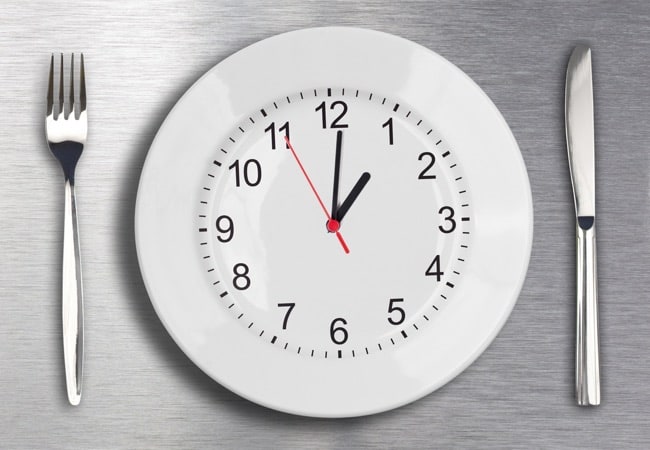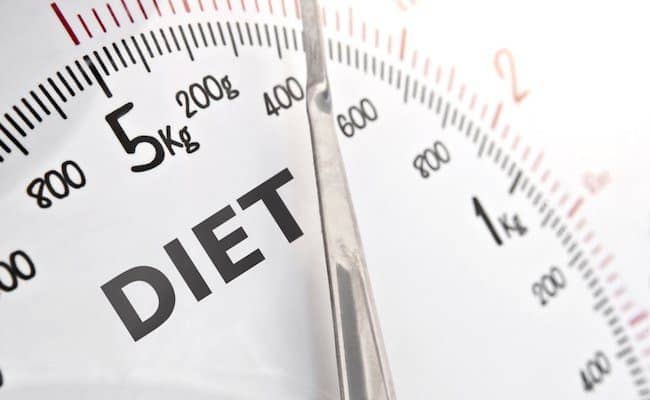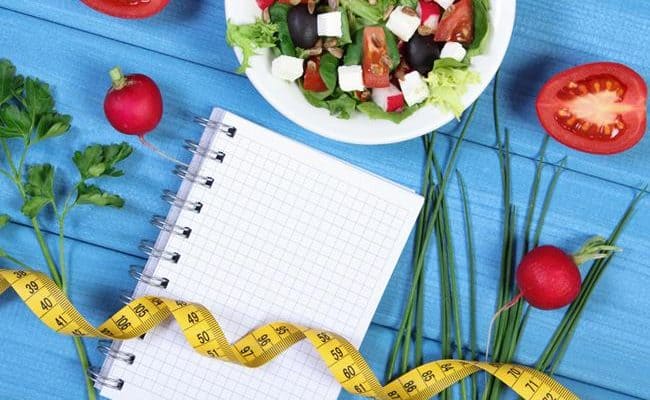
If you are like most Americans, you probably feel rushed when you eat, and you are probably multi-tasking when you are eating. The down fall with this is eating in a hurry may be hindering your weight loss efforts. When we eat fast, we tend to eat more than if we were eating slowly. If you eat fast, you’re more likely to eat too much before your body can signal your brain to stop eating. The end result can be eating to the point of feeling stuffed instead of eating until you’re satisfied.
Eating slowly may also help keep us satisfied longer than eating rushed. If you eat slowly, you are also probably more likely to drink more water while eating which can help you feel full. If you struggle to eat slowly, there are some tricks you can practice like putting your fork down in between bites.
Increases satiety
Eating slowly allows your body time to recognize when it is full. Hormones released from the digestive tract are released as the stomach expands to signal the brain it is full and eating can stop.
If you eat fast, you can bypass these signals, and it can be easy to eat until you are feeling stuffed instead of satisfied.
A 2009 study (1) looked at the difference in gut hormone levels after people ate a serving of ice cream in 5 minutes compared to 30 minutes. Researchers measured some gut hormones that are categorized as anorexigenic because they inhibit eating.
Researchers concluded eating slowly increases anorexigenic hormones which increases the feeling of satiety.
We want to feel a high satiety after eating because this will lower the need and desire to eat after a meal. Eating meals high in satiety, but low in energy density, is recommended for weight regulation.
Lowers total energy intake
If you eat slowly, you are more likely to not eat as many calories as when you eat fast, according to some research studies. A 2008 study (2) compared slow and fast food intake in healthy women.
Researchers found when women ate food slowly, food ingestion was significantly lower than the group of women who ate fast. Interestingly, the women who ate fast, even though they ate more calories, had lower satiety after the meal compared to the women who ate slowly.
If eating fast can increase calorie intake and lower satiety, this can be a double hindrance for weight loss.
Eating slowly can increase feeling satisfied after eating, which can lower food intake after the meal. Eating slowly can also help lower over calorie intake at a meal.
The idea that eating slowly can lower energy intake may seem counterintuitive for some people.
Because of our fast paced lifestyle, sometimes we think eating fast is the only thing to do. Eating slowly may need to be re-trained in the brain, but for most people eating slowly won’t mean more food intake; it will probably have the opposite effect.
Allows for more fluid intake
Eating fast leaves little time for drinking water throughout the meal. Eating slower can allow time to drink more fluids with the meal. Drinking fluid with the meal may also increase satiety and feeling full after a meal.
Some suggest eating slow should go hand in hand with increased fluid intake for maximum benefit for weight balance.
Eating fast is associated with obesity
Because eating fast can increase over all calorie intake at a meal and lower satiety, it shouldn’t be surprising that eating fast is associated with obesity. Both a 2006 study (3) and a 2013 study (4) found eating fast was associated with obesity rates.
In fact, the 2013 study also found eating fast was associated with high blood sugar levels and low HDL cholesterol in men, even after BMI was adjusted for.
This suggests eating fast may affect other aspects of health such as cardiovascular function and blood sugar regulation. Eating fast could increase blood sugar and insulin levels after eating that could factor into obesity risk and type 2 diabetes risk.
How much time is best for eating?
There is no exact time frame recommended for eating or time for waiting in between bites, but in general a recommendation is at least 20 minutes. Twenty minutes is often used as a time frame adequate for the stomach to signal the brain when it is full.
If it only takes you a couple of minutes, try to gradually slow down your time eating. Chew your food thoroughly and add in extra fluids while eating.
Tips to help you eat slower
If you’re struggling to slow down while you eat, get in the habit of putting your utensil down in between bites. This can seem annoying at first, but it is a practical way of slowing you down. Another common suggestion is to eat with your non-dominant hand.
If you are used to watching TV, being on the computer or on your phone when you eat, try to turn off distractions and focus on your meal when you’re eating. This can help increase your satisfaction from the meal and may help you slow down to enjoy the meal.
Finally, be observant of who you eat with. We can rush or slow down our eating based on the eating paces of others around us. If you eat meals with family or friends, try to get them on the same page of slowing down when you eat.
Conclusion
Eating fast has been associated with obesity and other risk factors for health. Slowing down when you eat can help lower the overall calorie content of a meal and can increase the satisfaction of a meal. Both of these benefits from eating slowly can be helpful for weight loss.
A general recommendation for eating is to allow at least 20 minutes. If you struggle lasting more than a few minutes, place your utensil down in between bites or eat with your non-dominant hand.










